Feeling the Muscle vs. Moving the Weight
Here's what you need to know...
Your Decision
Before the start of every set, you have a crucial decision to make. It's not the amount of weight to put on the bar or the number of reps to accomplish. It's something more abstract, yet just as important.
You need to decide whether your main purpose is to move the weight or to feel the muscle.
In other words, is your primary goal an objective performance measure like getting the maximum number of reps with that particular weight, or is it your goal to really feel the muscle working?
These are very different goals. A set done with either of these goals in mind will also look much different – one will be heavier and more explosive, while the other will be lighter and more controlled.
Which way is better? As different as these two approaches are, neither is inherently better than the other; they just serve different purposes.
So let's take a closer look at feeling the muscle versus moving the weight and see which one is best used when.
Movements Versus Muscles
Athletes involved in power and movement-based sports (MMA, football, powerlifting) should generally focus on training movements, while physique athletes should focus on training muscles.
Athletes who participate in movement-based sports need to be able to move better to improve their performance. An MMA guy doesn't need to worry about the size of his pecs. Instead, he needs to be concerned with the ability of his pecs to generate maximum force rapidly and repeatedly, enabling him to land more damaging strikes to his opponent.
Similarly, a BMX racer isn't concerned about whether his legs look good in his underwear. No, he cares more that those legs can apply maximum power to get him out of the gate and around the track as quickly as possible.
On the other end of the spectrum, physique athletes who are more interested in improving the appearance of their musculature – let's call them bodybuilders – aren't concerned about power output or endurance capacity. They're concerned about how the muscles end up looking as a result of their training.
Related: 10 Reasons Bodybuilders Are More Jacked Than Powerlifters
Bodybuilders and other physique competitors don't care what their vertical jump is or even how much they can squat – they're simply concerned about having full, evenly developed quads that have good separation between the three visible quad heads.
And a figure competitor isn't concerned about her ability to perform the maximum number of pull-ups in the shortest amount of time. She wants maximum lat development, thus making her waist and hips appear narrower.
Even though it's pretty unanimous that athletes and bodybuilders ultimately have different training goals, this fact tends to be lost by the time we hit the gym floor. So let's look at a few practical ways that athletes and bodybuilders can finely tune their training to maximize the desired outcome.
Training The Movements: 3 Factors
There are quite a few ways an athlete can tailor his or her training to maximize the performance adaptation.
1. Rep Speed
A great, no-nonsense rule is that if you want to be able to move fast, you need to train fast. Simply put, you get better at what you do.
To maximize strength and speed, you'd need to be able to recruit the maximum number of muscle fibers and get the nerves that innervate those fibers to fire as strong a nerve impulse as possible.
In other words, if you're a strength athlete then you want to maximize motor unit recruitment and neural coding. One way to accomplish this is by increasing rep speed. Performing a rep explosively will maximize both motor unit recruitment and neural coding.
So let's say you're doing a set of back squats. It would make sense to perform the concentric portion (standing up) as quickly as possible. By doing so regularly, you'll be able to apply maximum force at any given moment.
Although caution should be used when doing anything other than controlled eccentric movements, doing the eccentric portion of the squat quickly will also serve to maximize motor unit recruitment.
This occurs especially as you reach the point in the rep where the momentum from the rapid eccentric descent must be quickly decelerated, stopped, and then changed in direction rapidly by quickly generating a concentric contraction.
So by training explosively, you develop the ability to move faster.
2. Weight Selection
Competitive athletes can improve their ability to perform certain movement patterns by regularly performing them under a heavy resistance. A fighter performing the bench press will develop better explosive pushing power to help him literally push his opponent around.
If you're an athlete, you'll benefit from using a relatively heavy weight (high percentage of 1RM) when doing the bench press to maximize the improvements in motor unit recruitment and neural coding.
So if you're an athlete in the middle of a set of barbell bench presses, you should be focused on moving that heavy resistance as explosively as possible – not on feeling the pecs working.
And that leads us to the final difference between training for movements versus muscles – mental focus.
3. Mental Focus
Where you place your mental focus during a set is the single-most defining factor in what results that set will produce.
Watch a CrossFitter do a set of pull-ups and watch a bodybuilder do a set of pull-ups – they look totally different, almost like they're not even the same exercise. The reason for this is the mindset or purpose of the lifter.
Someone doing CrossFit is going to be more concerned about doing the greatest amount of pull-ups in the shortest period of time possible. And to do so, the reps are done in a way that maximizes performance and efficiency. Feeling the muscles work is of no concern.
Related: Bodybuilder Goes CrossFit
A bodybuilder doing pull-ups will be focused solely on feeling the muscles working.
When you begin a set of any given exercise, where you place your focus will determine how you perform, and how you perform will determine what type of training adaptations occur.
Training The Muscles: Three Factors
Take a look at how the same three factors would be different for someone concerned more about the cosmetic appearance of his physique.
1. Rep Speed
The main thing to remember about rep speed for bodybuilding is this: train just slowly enough that you can make sure the target muscle is doing the brunt of the work. Rep speed is secondary to stimulating the right muscle.
Although it's not a bad idea to occasionally train with a higher rep speed to maximize motor unit recruitment, training for hypertrophy is generally more about making sure the target muscle is trained and under tension for an optimal amount of time.
Hypertrophy is as much about time under tension (TUT) as it is about maximizing the number of muscle fibers stimulated.
A bodybuilder must first make sure that the rep speed he's using allows him to keep the tension squarely on the target muscle. That'll usually be a much slower rep speed than you'd see from someone training for athletic performance. The eccentric or negative phase of the rep especially will be done more slowly and under control.
The concentric can, and should, be done a bit more explosively to recruit the maximum number of motor units – even for those training for hypertrophy.
2. Weight Selection
Choosing the right resistance for bodybuilding training follows a similar protocol to rep speed. First, make sure you're targeting the right muscle, then feel free to use relatively heavy weight without losing the feeling of the target muscle working.
That's one thing that's so unique about bodybuilding and hypertrophy training: training like a power athlete with heavy resistance and/or high rep speed can certainly be beneficial, especially because of the aforementioned neurological changes that occur.
But doing it without stimulating the right muscles won't lead to growth in the right areas.
For example, let's say you're a bodybuilder doing the barbell bench press in order to bring up your pecs. If you aim to use as much weight as possible and move that weight explosively, no doubt you'll "perform" better, but if doing so shifts a good portion of the work away from your chest to your anterior delts, then you've robbed your pecs of the stimulation they need to grow.
You can't chase two rabbits at once. Don't try to perform better at the expense of staying small.
That leads us to our final, yet most significant way in which bodybuilders should train differently than athletes.
3. Mental Focus
When training for muscle growth your mind needs to be on the target muscle.
If you don't focus on the muscle you're trying to bring up, your body will revert to what it's good at, namely letting the same muscles "sleep" and calling upon already overworked muscles surrounding the ones you're wanting to build.
Doing an exercise without feeling the target muscle work will not only delay progress, it can also set you back by exacerbating muscle imbalances.
When you keep training a muscle you don't readily feel working, it's natural for your body to try to work around this inefficient, sleepy muscle by changing the motor program to recruit more efficient, ready-to-work muscles.
Related: Mind-Muscle Connection: Fact or BS?
The only way to make sure you get out of the exercise what you need is to use that powerful muscle between your ears. Make sure that you feel the right muscles working as much as possible from the onset of the first rep to the completion of the last.
Tweak your form, alter your rep speed a bit (usually by going slower), or consider employing a technique like isometric holds – especially in the contracted position – to make sure you feel the stress of the exercise in the right place.
What's Your Decision?
Bodybuilders can benefit from training like an athlete and vice versa. But just like you'd focus your attention on learning a language if that's what you want to learn, you must decide before each set what your primary goal is. Then train accordingly.
Here's what you need to know...
- Before you lift, decide what your main goal is. The goal to achieve a specific look requires different lifting approach than the goal to become a better performance athlete.
- Those who lift in order to improve their athletic performance are most concerned with moving the weight from point A to point B the most efficiently with the most weight.
- Those who lift in order to look a specific way should focus on feeling the target muscles working. Moving a weight from point A to point B is secondary.
- The amount of weight you use, your rep speed, and your mental focus will be different based upon your main goal.
Your Decision
Before the start of every set, you have a crucial decision to make. It's not the amount of weight to put on the bar or the number of reps to accomplish. It's something more abstract, yet just as important.
You need to decide whether your main purpose is to move the weight or to feel the muscle.
In other words, is your primary goal an objective performance measure like getting the maximum number of reps with that particular weight, or is it your goal to really feel the muscle working?
These are very different goals. A set done with either of these goals in mind will also look much different – one will be heavier and more explosive, while the other will be lighter and more controlled.
Which way is better? As different as these two approaches are, neither is inherently better than the other; they just serve different purposes.
So let's take a closer look at feeling the muscle versus moving the weight and see which one is best used when.
Movements Versus Muscles
Athletes involved in power and movement-based sports (MMA, football, powerlifting) should generally focus on training movements, while physique athletes should focus on training muscles.
Athletes who participate in movement-based sports need to be able to move better to improve their performance. An MMA guy doesn't need to worry about the size of his pecs. Instead, he needs to be concerned with the ability of his pecs to generate maximum force rapidly and repeatedly, enabling him to land more damaging strikes to his opponent.
Similarly, a BMX racer isn't concerned about whether his legs look good in his underwear. No, he cares more that those legs can apply maximum power to get him out of the gate and around the track as quickly as possible.
On the other end of the spectrum, physique athletes who are more interested in improving the appearance of their musculature – let's call them bodybuilders – aren't concerned about power output or endurance capacity. They're concerned about how the muscles end up looking as a result of their training.
Related: 10 Reasons Bodybuilders Are More Jacked Than Powerlifters
Bodybuilders and other physique competitors don't care what their vertical jump is or even how much they can squat – they're simply concerned about having full, evenly developed quads that have good separation between the three visible quad heads.
And a figure competitor isn't concerned about her ability to perform the maximum number of pull-ups in the shortest amount of time. She wants maximum lat development, thus making her waist and hips appear narrower.
Even though it's pretty unanimous that athletes and bodybuilders ultimately have different training goals, this fact tends to be lost by the time we hit the gym floor. So let's look at a few practical ways that athletes and bodybuilders can finely tune their training to maximize the desired outcome.
Training The Movements: 3 Factors
There are quite a few ways an athlete can tailor his or her training to maximize the performance adaptation.
1. Rep Speed
A great, no-nonsense rule is that if you want to be able to move fast, you need to train fast. Simply put, you get better at what you do.
To maximize strength and speed, you'd need to be able to recruit the maximum number of muscle fibers and get the nerves that innervate those fibers to fire as strong a nerve impulse as possible.
In other words, if you're a strength athlete then you want to maximize motor unit recruitment and neural coding. One way to accomplish this is by increasing rep speed. Performing a rep explosively will maximize both motor unit recruitment and neural coding.
So let's say you're doing a set of back squats. It would make sense to perform the concentric portion (standing up) as quickly as possible. By doing so regularly, you'll be able to apply maximum force at any given moment.
Although caution should be used when doing anything other than controlled eccentric movements, doing the eccentric portion of the squat quickly will also serve to maximize motor unit recruitment.
This occurs especially as you reach the point in the rep where the momentum from the rapid eccentric descent must be quickly decelerated, stopped, and then changed in direction rapidly by quickly generating a concentric contraction.
So by training explosively, you develop the ability to move faster.
2. Weight Selection
Competitive athletes can improve their ability to perform certain movement patterns by regularly performing them under a heavy resistance. A fighter performing the bench press will develop better explosive pushing power to help him literally push his opponent around.
If you're an athlete, you'll benefit from using a relatively heavy weight (high percentage of 1RM) when doing the bench press to maximize the improvements in motor unit recruitment and neural coding.
So if you're an athlete in the middle of a set of barbell bench presses, you should be focused on moving that heavy resistance as explosively as possible – not on feeling the pecs working.
And that leads us to the final difference between training for movements versus muscles – mental focus.
3. Mental Focus
Where you place your mental focus during a set is the single-most defining factor in what results that set will produce.
Watch a CrossFitter do a set of pull-ups and watch a bodybuilder do a set of pull-ups – they look totally different, almost like they're not even the same exercise. The reason for this is the mindset or purpose of the lifter.
Someone doing CrossFit is going to be more concerned about doing the greatest amount of pull-ups in the shortest period of time possible. And to do so, the reps are done in a way that maximizes performance and efficiency. Feeling the muscles work is of no concern.
Related: Bodybuilder Goes CrossFit
A bodybuilder doing pull-ups will be focused solely on feeling the muscles working.
When you begin a set of any given exercise, where you place your focus will determine how you perform, and how you perform will determine what type of training adaptations occur.
Training The Muscles: Three Factors
Take a look at how the same three factors would be different for someone concerned more about the cosmetic appearance of his physique.
1. Rep Speed
The main thing to remember about rep speed for bodybuilding is this: train just slowly enough that you can make sure the target muscle is doing the brunt of the work. Rep speed is secondary to stimulating the right muscle.
Although it's not a bad idea to occasionally train with a higher rep speed to maximize motor unit recruitment, training for hypertrophy is generally more about making sure the target muscle is trained and under tension for an optimal amount of time.
Hypertrophy is as much about time under tension (TUT) as it is about maximizing the number of muscle fibers stimulated.
A bodybuilder must first make sure that the rep speed he's using allows him to keep the tension squarely on the target muscle. That'll usually be a much slower rep speed than you'd see from someone training for athletic performance. The eccentric or negative phase of the rep especially will be done more slowly and under control.
The concentric can, and should, be done a bit more explosively to recruit the maximum number of motor units – even for those training for hypertrophy.
2. Weight Selection
Choosing the right resistance for bodybuilding training follows a similar protocol to rep speed. First, make sure you're targeting the right muscle, then feel free to use relatively heavy weight without losing the feeling of the target muscle working.
That's one thing that's so unique about bodybuilding and hypertrophy training: training like a power athlete with heavy resistance and/or high rep speed can certainly be beneficial, especially because of the aforementioned neurological changes that occur.
But doing it without stimulating the right muscles won't lead to growth in the right areas.
For example, let's say you're a bodybuilder doing the barbell bench press in order to bring up your pecs. If you aim to use as much weight as possible and move that weight explosively, no doubt you'll "perform" better, but if doing so shifts a good portion of the work away from your chest to your anterior delts, then you've robbed your pecs of the stimulation they need to grow.
You can't chase two rabbits at once. Don't try to perform better at the expense of staying small.
That leads us to our final, yet most significant way in which bodybuilders should train differently than athletes.
3. Mental Focus
When training for muscle growth your mind needs to be on the target muscle.
If you don't focus on the muscle you're trying to bring up, your body will revert to what it's good at, namely letting the same muscles "sleep" and calling upon already overworked muscles surrounding the ones you're wanting to build.
Doing an exercise without feeling the target muscle work will not only delay progress, it can also set you back by exacerbating muscle imbalances.
When you keep training a muscle you don't readily feel working, it's natural for your body to try to work around this inefficient, sleepy muscle by changing the motor program to recruit more efficient, ready-to-work muscles.
Related: Mind-Muscle Connection: Fact or BS?
The only way to make sure you get out of the exercise what you need is to use that powerful muscle between your ears. Make sure that you feel the right muscles working as much as possible from the onset of the first rep to the completion of the last.
Tweak your form, alter your rep speed a bit (usually by going slower), or consider employing a technique like isometric holds – especially in the contracted position – to make sure you feel the stress of the exercise in the right place.
What's Your Decision?
Bodybuilders can benefit from training like an athlete and vice versa. But just like you'd focus your attention on learning a language if that's what you want to learn, you must decide before each set what your primary goal is. Then train accordingly.

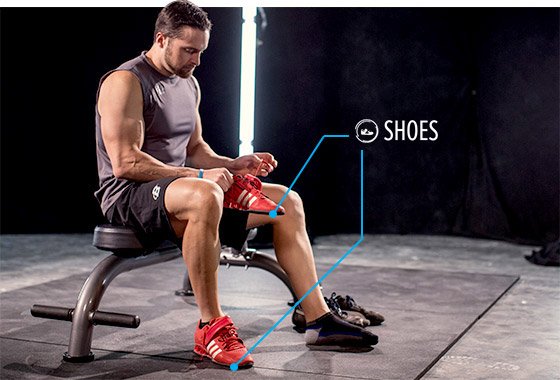
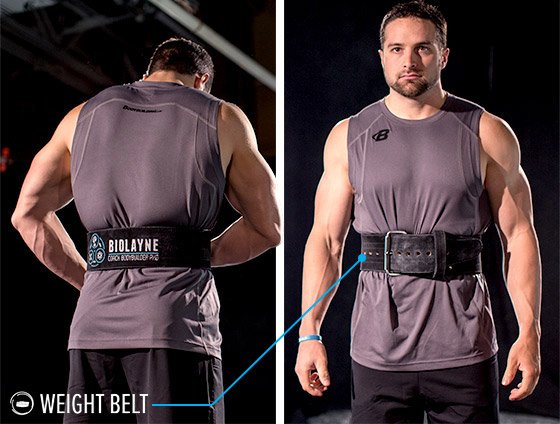
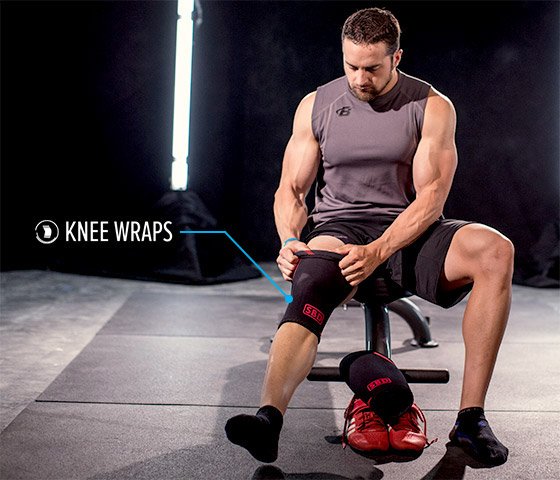
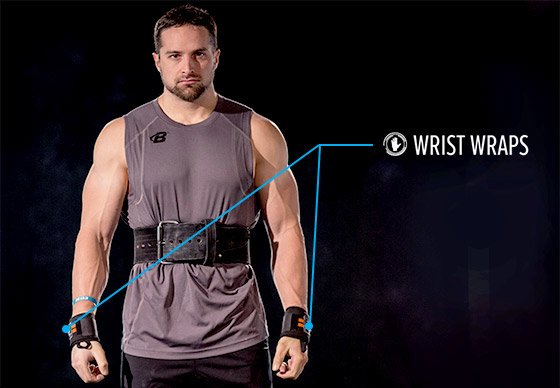
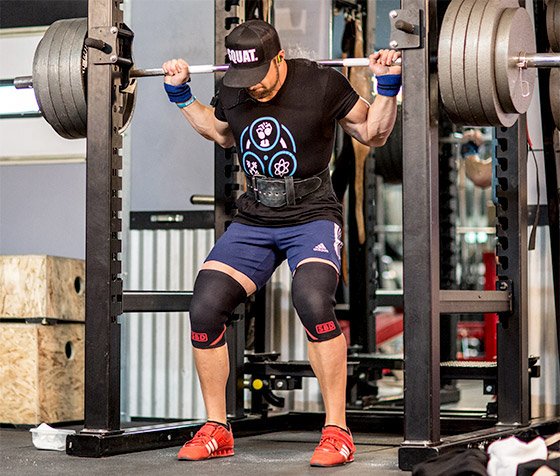
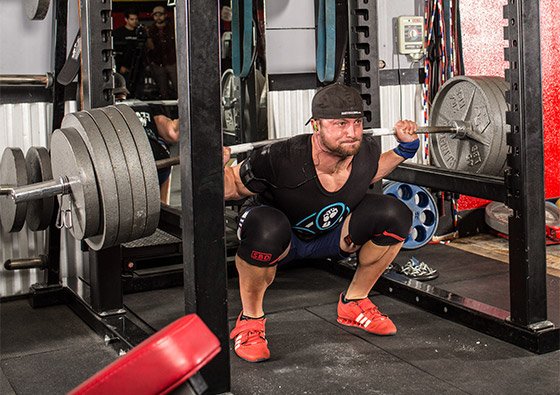
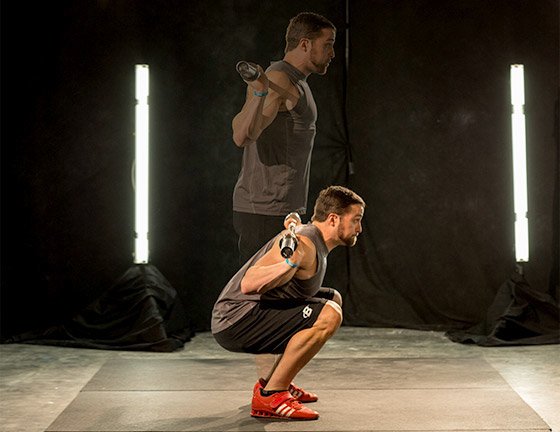
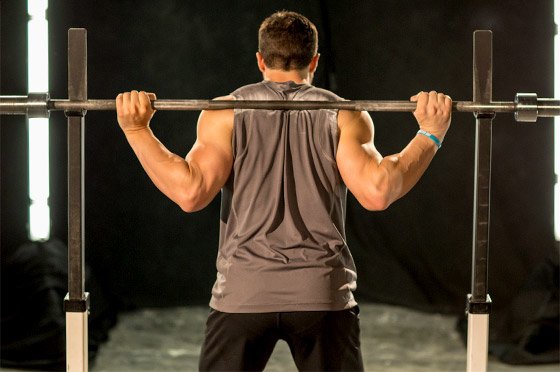


Comment